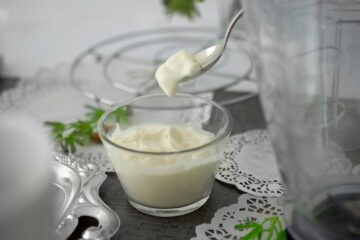Did you know that “cheddaring” is actually a verb in cheesemaking?
At Clover Creek Cheese Cellar, this traditional technique is at the heart of what makes our cheddar so delicious for your family’s table.
The History Behind Cheddaring: Born from Necessity
Cheddar cheese wasn’t just invented.
It was problem-solving at its finest!
When cheesemakers from the European mainland brought their traditional methods to England’s damp climate, they faced a frustrating dilemma: their cheeses would develop gas during aging and literally explode!
The wet English environment created perfect conditions for gas-producing bacteria to thrive inside the aging wheels.
After ruined batches and wasted milk, a resourceful cheesemaker in the village of Cheddar, Somerset, made a breakthrough discovery around the 12th century.
This innovative cheesemaker found that by letting the curds develop more acidity in the vat before pressing, through the process we now call cheddaring, the higher acid levels would naturally kill off the troublesome gas-producing bacteria.
The result? A cheese that could safely age for months without blowing apart.
The technique of stacking and turning the curds created a denser, less moisture-rich cheese with the perfect acidity.
It wasn’t just stable—it developed rich, complex flavors during aging.
This practical solution proved so successful that it spread throughout England and eventually crossed the Atlantic with settlers, becoming the foundation for one of America’s most beloved cheeses.
At Clover Creek, we’re proud to continue this tradition of problem-solving craftsmanship that began centuries ago.
How We Cheddar at Clover Creek
After cooking our curds and draining the whey (which we repurpose as nutrition for our calves), the real magic begins:
The Cheddaring Process
- We gather all the curds into a central pile in our cheese vat
- We cut this pile into long rectangular slabs
- We lay these slabs across the bottom of the vat
- Every 15 minutes for 90 minutes, we turn and stack these slabs
This turning and stacking is cheddaring. With each turn:
- The slabs compress and knit together
- More whey drains away
- The texture becomes firmer and denser
- The acidity continues to develop
This seemingly simple process gives cheddar its characteristic texture and aging potential and differentiates it from other cheeses that skip this crucial step.
The Milling Stage
Once cheddaring is complete, we mill (cut) the slabs into small strips using repurposed French-fry cutters.
This transforms our large slabs into finger-sized pieces, creating more surface area for the final step: salting.
Watch as we operate the milling machines in the video below.
The Art of Salting
Salting isn’t just about flavor—it’s a critical preservation technique that:
- Draws out remaining moisture
- Slows bacterial growth so that the cheese isn’t too acidic
- Helps develop the cheese’s flavor profile during aging
At Clover Creek, we add salt in three stages over 30 minutes, gently stirring the curds between additions.
This methodical approach ensures even distribution throughout the cheese.
This is when you’ll hear cheesemakers talk about the “squeak,” that distinctive sound fresh curds make against your teeth.
This squeak is the hallmark of perfectly cheddared and salted curds!
From Our Farm to Your Family
These traditional cheddaring and salting techniques add several hours to our cheesemaking process, but as a mom looking for healthy, quality food for your family, you’ll taste the difference.
Our careful attention to these time-honored methods is why Clover Creek cheddar develops such rich flavor and excellent texture as it ages.
Next month, I’ll explain how we transform these perfectly cheddared and salted curds into the finished wheels of cheese you bring home to your family.
Coming next: Hoops & Followers – The Final Steps of Cheesemaking



3 Comments
ART · December 8, 2024 at 9:00 pm
Do you I have any aged cheese? Like a few years or older.
Thanks
Anthony Rice · December 8, 2024 at 9:13 pm
The oldest cheese we have right now is Royer Mountain at 15 months and Moshannon at 12 months.
Arthur Lersch · December 9, 2024 at 10:36 am
Thank you